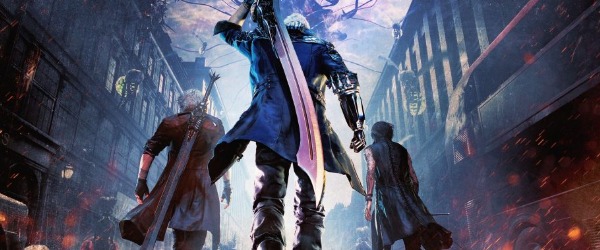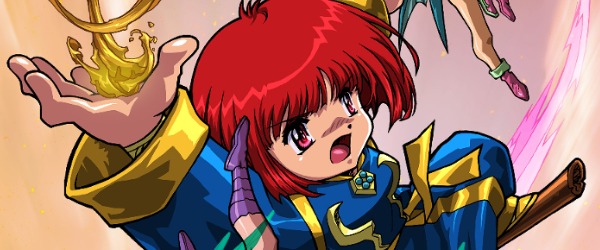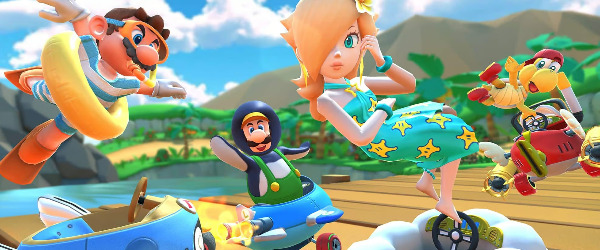
Greatness Through Simplicity – How Nintendo Designs Games - Article
by Taneli Palola , posted on 30 August 2017 / 15,631 ViewsYou may have noticed over the last three decades that Nintendo makes some pretty decent video games from time to time. There's a reason why the company has stayed relevant in the video game industry since the early 1980s, while countless other developers, publishers, and console manufacturers have come and gone, many leaving little to no lasting impact on the industry as a whole. Simply put, Nintendo is arguably the single most important company in the history of video games.
While I do criticize Nintendo on occasion for some of its decisions and outdated practises, I will never take away from it the fact that no other entity in the world of video games has the same kind of exceptional track record as it does when it comes to making great video games. From both creative and financial standpoints, Nintendo has produced some of the best video games of all time ever since it first entered the industry, and has continued to do so for what is now its seventh home console generation in a row.

Nintendo has always had a knack for making games that have a style and feel that is wholly unique, but have you ever considered what exactly it is that makes many of the company's games so great to begin with? What is it in them that makes them stand out from the games of almost any other developer in the world? The answer is surprisingly simple, which is perhaps why a lot of people don't really notice or think about it. Nintendo makes games by first ensuring the core fundamentals are rock solid, and then creates every aspect of the game around those fundamental elements.
Building a Game Around a Mechanic
When you stop and think about many of Nintendo's greatest games, you may begin to notice something interesting about them. A lot of them are built entirely around one strong core mechanic, which is then stretched out and given multiple layers to make it as diverse and interesting as possible. Compare this to a handful of other big video games and developers and you'll spot that many of them introduce a new mechanic, use it, and then discard it within a single level.
For many developers, game mechanics are no longer a thing to build something interesting and long-lasting around, but instead are a thing to advertise in trailers and on conference floors. They want to be able to say that their game has dozens of different types of gameplay, even though maybe only one or two of them are explored to any notable degree.

As an example, just think of almost any Call of Duty, Assassin's Creed or Battlefield game from the last five to ten years and count the number of different gameplay types and elements that are introduced and either completely discarded or made pointless after just one level. It no longer feels like the teams behind these titles are building an interesting and engaging gameplay experience, but instead are filling in the required number of different gimmicks for marketing purposes.
Nintendo on the other hand has, from the very beginning up to the present day, created entire games based around one core idea that carries the whole game. Naturally, the most famous example is the entire Super Mario Bros. series. When you strip down Super Mario Bros. to its very core, every game is fundamentally about jumping and what can be done with that one simple mechanic.

In Super Mario Bros. for the NES, every aspect of the gameplay revolves around this one mechanic. To break the blocks, Mario jumps. To defeat enemies, he jumps on them. To finish a level he has to jump and touch the flagpole at the end. To defeat Bowser at the end of each world Mario usually has to jump on the axe to drop the bridge and make Bowser fall into lava. Even when the game introduces enemies that can't be defeated in this manner, it still revolves around using the same mechanic, albeit in a different way (namely avoiding enemies by jumping over them). Mario is defined by that one basic ability which he uses for practically everything.
While later games in the series have become increasingly more complex over time, they still mostly involve variations of that one core mechanic that was introduced over 30 years ago. Super Mario 64 made the mechanic more complex by adding a new dimension to the gameplay, and Super Mario Galaxy added further layers to it thanks to gravity and planetoids, but all of them are still fundamentally games about jumping. On a somewhat related note, go and take a look at the box art for each of the mainline Super Mario games and you'll notice one thing they all share in common; each features an image that focusses on the game's central mechanic, immediately highlighting what players can expect from it.

Mario is, of course, not the only Nintendo series that does this. Luigi's Mansion for the GameCube is another good example of a game build almost entirely around a single mechanic, which in this case is vacuuming. Luigi uses this mechanic to do almost everything, from solving puzzles to fighting ghosts. In a 2013 interview with IGN, Ryuichi Nakada, one of the supervisors on Luigi's Mansion: Dark Moon, said the following about the title:
You use the vacuum to solve the puzzles all through the mansion. You can use it in all kinds of ways to navigate and interact with the ghosts. It’s really a game about using the vacuum.

For a more recent example we can look at Splatoon, Nintendo's rather unusual take on the online multiplayer shooter genre. Even though the gameplay allows the player to approach rounds in different ways, every single aspect of it once again comes back to one simple mechanic/feature. In this case ink. To win a match in Splatoon you need to cover the map with your team's ink; in order to move faster around the map the players can swim around in their team's ink, while the opposing team's ink will slows them down; your weapons replenish by swimming in the ink, and so on. It's a simple, basic premise that is used for practically every aspect of Splatoon's gameplay.
Of course, Nintendo isn't the only company that has made games based on one, strong central mechanic. It's just the most notable user of this design philosophy. Portal is an obvious example of this type of design philosophy in the AAA arena, and indie developers in the last five to ten years have also used it to great effect in a large number of games.
Everything in the Service of Gameplay
There are countless different ways to approach video game creation, and none are inherently better than the others. Some developers start with an idea for a story they want to tell, or maybe a theme they want to tackle. Others may come up with a cool visual style they want to use. Nintendo, however, generally starts by coming up with a fun and engaging way to play, and builds everything else to suit that specific type of gameplay.
For example, in one installment of 'Iwata Asks' the developers of The Legend of Zelda series discussed how the series' story and gameplay are created. They stated that initially the director comes up with a very broad outline for a story, upon which they then develop interesting ways to play the game. Details of the story are then fleshed out to accommodate these gameplay elements, and not the other way around.

Going back to the example of Splatoon, that game began life with the desire to create a title with a new type of structure and gameplay. The characters, aesthetic, and everything else about it came after the gameplay style had already been set in stone. The inklings themselves were created because they fit the game's core concept of using colored ink to fight battles. Initially, the characters were just bland white blobs that lacked any other distinguishing characteristics. As Satoru Iwata stated in another one of his 'Iwata Asks' segments, the way Shigeru Miyamoto and Nintendo EAD create games is that function defines form, not the other way around, and Splatoon followed this same philosophy.
Of course we must remember that not all Nintendo games are made the same way either. The company has numerous different studios and creators under its wings, each creating games in their own style. Mark Brown made a wonderful video on this topic, which I strongly recommend you check out below, where he breaks down the 4 step level design philosophy of Koichi Hayashida, the director of Super Mario 3D World and Super Mario Galaxy 2.
The Nintendo Way
Nintendo has always done things differently from nearly all other major developers around the world, and industry trends rarely have any bearing on the kinds of games it creates. This has allowed Nintendo to remain relevant in an business that commonly sees other companies being bought out or going under because they're unable to adapt as the industry changes around them. Nintendo has never really worried about that, although that's not always been to its benefit.
The thing is, Nintendo makes mistakes just like every other developer and publisher in the world. Its development teams don't always produce great or successful games, no matter how talented the people behind them are. It's also stubbornly set in its ways and this has resulted in practices and decisions that are and have been woefully behind the times in more ways than one. There are times when Nintendo deserves to be criticized for what it does, no matter how great much of its output is.
So no, Nintendo isn't perfect, and its way of doing things isn't the only right way, but even with this in mind Nintendo has managed to develop a huge number of the greatest games of all time, and continues to do so to this day. Nintendo knows how to make fun, unique and just plain excellent games, and one of the main reasons for this is that it approaches the art of game development differently from almost anyone else. Its teams don't always succeed in what they're trying to do, but when they do, the end results are often absolutely amazing. That is the Nintendo way.

Recommended reading:
- Iwata Asks (The Legend of Zelda)
- Iwata Asks (Splatoon)
- Iwata Asks (The Essence of Mario)
- Luigi's Mansion 2 Interview
More Articles
I don't agree that Splatoon leans heavily on one mechanic. At least, not any moreso than any modern shooter.
As for the other games, I agree. However, one could say the same about almost any game made before the late 90's. Nintendo has just kept doing things the same way.
Every aspect of Splatoon's gameplay relies on the ink the player's spread around the maps. Without it you can't move fast, reload your weapons, or win the matches. There are certainly layers to said mechanic, such as the various different ways to spread the ink, and the counterplay created by the opponents ink, but ultimately it all comes back to that one simple mechanic.
I really like that first sentence haha. :)
yeah like every now and then they make something not too bad. you know, inbetween all the timeless masterpieces they keep pumping out all the time.






















